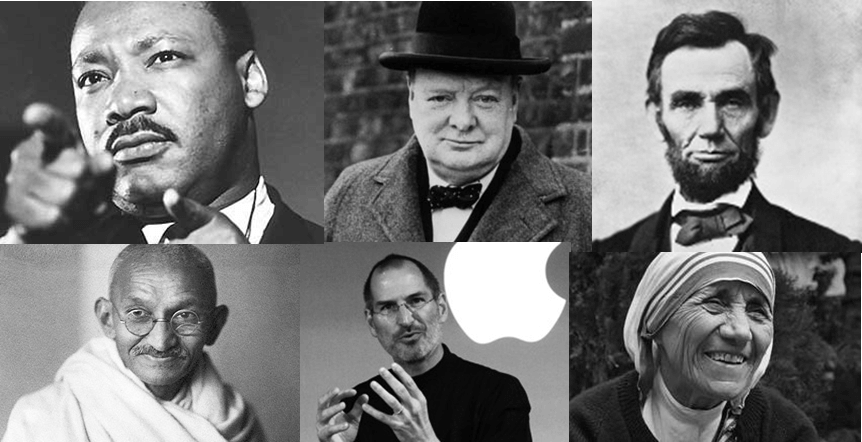The image accompanying this post includes some of the most influential personalities of recent history; known for their courage of conviction and ability to influence others. Some had strong, ebullient personalities, and others were more quiet and reserved. Some were affluent, others of more humble means.
One attribute common to each of these individuals is a vision of how things within their sphere of influence could be; a vision that guided their words and behavior in a very powerful way. People didn’t follow these leaders because they were compelled to, but because they shared their visions and wanted to take part in making them reality.
They were classic examples of what we might term as “visionary leaders,” which may sound grandiose, but I like Peter Senge’s simple definition from The Fifth Discipline, because it makes the concept so much more accessible to you and me:
“Being a visionary leader is about solving day-to-day problems with my vision in mind.”
It wasn’t a single action or event that defined each of these leaders and their legacies, but the cumulative effect of behavior consistent with their visions over time.
Even in our roles as professionals, you and I have the opportunity to be “visionary leaders” in the sense that we can become powerful, positive influences through continued and consistent behavior, aligned with our visions and values. We may not become as famous as the icons depicted above, but we can certainly make a difference as we go about solving the day-to-day problems we face.






Great article.
To rest of the world,if you want to learn basics of business analysis?.
Check out my blog
http://passccba.com/
As you study these visionaries, keep a notebook on Things I Am Learning and take notes on behaviors you can emulate and strategies you can use to advance your own business. Then take that knowledge and put it into action. Remember, only through action does your vision become reality.